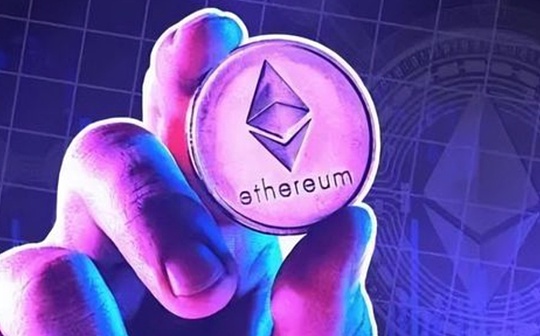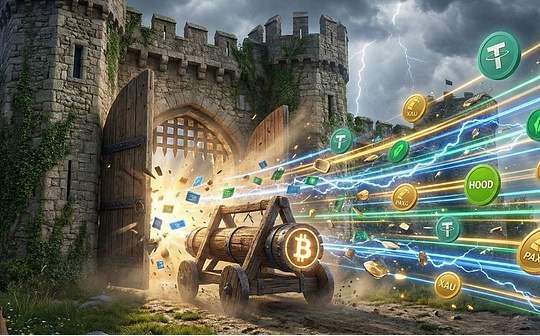
Author: Chain Source: medium Translation: Shan Oppa, Bitchain Vision
Ethereum’s Cancun-Deneb (“Dencun”) hard fork upgrade has been successfully activated on all test networks, laying the foundation for its mainnet’s debut on March 13, 2024.At the heart of this critical upgrade lies in the “protodanksharding” implemented through EIP-4844, significantly reducing transaction costs associated with Layer 2 solutions.Based on the advancements in Shapella upgrades, Dencun introduced innovative elements such as temporary data blobs (or “blobs”) and enhanced Ethereum’s consensus and execution layers.As the mainnet launch approaches, node operators and stakeholders are urged to update their systems to ensure they are aligned with the numerous key protocol changes that have been upgraded, all in an effort to enhance Ethereum’s scalability and operational efficiency.
Dencun The significance of upgrading
The Dencun upgrade is expected to transform the transaction processing and verification methods in the Ethereum ecosystem.By implementing Proto-Danksharding, the network seeks to achieve greater scalability and reduce transaction costs, thereby improving user experience and scaling potential use cases for Ethereum.
Main goals of upgrade
The main goals of Dencun upgrade include:
-
Enhance scalability to accommodate a larger number of transactions without compromising performance.
-
Reducing high transaction costs makes Ethereum more cost-effective for users.
-
Promote seamless integration of layer 2 solutions and further enhance Ethereum’s potential in decentralized applications and smart contracts.
The Dencun upgrade represents a key step in optimizing Ethereum infrastructure to enable wider adoption and continuous innovation in a rapidly evolving blockchain environment.
Learn about Ethereum’s Dencun upgrade
1. Original Danksharding: Improve Ethereum scalability
One of the main features of the Dencun upgrade is Proto-Danksharding, which aims to solve the scalability problem of Ethereum.It works as follows:
-
The network will be divided into smaller parts, called “shash chains”.
-
These sharded chains will be able to process transactions simultaneously, thereby increasing the network’s capacity.
-
Since each shard is able to process its own set of transactions, Ethereum will be able to process a significantly increased number of transactions per second.
This innovation is expected to have a huge impact on Ethereum’s scalability, making it more efficient and able to handle increased traffic.
2. EIP-4844: Optimize transaction execution
Another important component of the Dencun upgrade is EIP-4844 (Ethereum Improvement Proposal).Its main focus is to optimize transaction execution and reduce natural gas costs.Here are some of the main highlights:
-
A new opcode called “DENCUN” was introduced, aiming to execute smart contracts more efficiently.
-
Implementation of temporary data blobs – A temporary storage unit that stores intermediate results during contract execution.
-
These data blocks help reduce the overall gas costs associated with the execution of complex smart contracts.
By improving transaction execution and reducing Gas costs, EIP-4844 is designed to make Ethereum more cost-effective and user-friendly.
3. Impact on Layer 2 Solutions
The Dencun upgrade also has a significant impact on the Layer 2 solution, which is designed to enhance scalability by handling off-chain transactions while leveraging the security of the Ethereum mainnet.Here is how it affects them:
-
Existing Rollup technologies such as Arbitrum, zkSync, StarkWare and Optimism use Layer 1 (Ethereum mainnet) to ensure security.
-
The introduction of shard chains through Proto-Danksharding will enable these Layer 2 solutions to further scale their operations with multiple shards.
The integration between the Dencun upgrade and Layer 2 solution brings exciting possibilities to the future of Ethereum.It enables developers to create decentralized applications that can handle large volumes of transactions at a lower cost, ultimately improving the user experience and driving wider adoption.
Together with Dencun to enhance scalability and reduce transaction costs
Reduce Gas fees with original Danksharding
*Proto-Danksharding* is a key component of the Dencun upgrade and has contributed greatly to reducing Gas fees for Tier 1 transactions.By implementing sharding at the protocol level, the Ethereum network can process multiple transactions simultaneously, reducing Gas fees to users.
New storage type: “Blob” used to optimize layer 2 transactions
The introduction of short-term data blobs plays a crucial role in enhancing the scalability and efficiency of the Ethereum consensus layer and execution layer.These “temporary data blocks” are temporary and can be quickly retrieved and utilized, thereby reducing the overall burden on the network.
By leveraging temporary data blobs and Proto-Danksharding, Ethereum’s Dencun Upgrade effectively solves scalability issues while working to reduce user transaction costs for Layer 1 and Layer 2 solutions.
Prepare for a smooth transition: Upgrade nodes for Dencun
Node operators and stakeholders play a vital role in the successful implementation of the Ethereum Dencun upgrade.To ensure a smooth transition and take advantage of new protocol changes, it is important to follow certain steps and update the node software accordingly.
Step 1: Stay informed at any time
Stay tuned for the latest announcements and information about Dencun upgrades.This can be done by following official Ethereum communication channels such as blogs, forums and verified social media accounts.
Step 2: Backup your data
Before making any changes, it is important to back up all node data, including blockchain data, configuration files and any other related files.This ensures that you have a secure copy in case of any problems during the upgrade process.
Step 3: Check software compatibility
Verify that your current node software version is compatible with the Dencun upgrade.Check whether any specific software updates or patches are required to adapt to protocol changes.
Step 4: Update the node software
If you need updates, please download the latest version of the node software from the official source.Follow the installation instructions provided by the developer to correctly update your node software.
Step 5: Synchronize blockchain data
After updating the node software, sync it with the Ethereum blockchain to ensure you have the latest version of the network.
Step 6: Monitor the network status
Pay close attention to network status metrics, such as block confirmation time and transaction fees, to ensure that the upgraded nodes are functioning properly.
By following these steps, you can contribute to a smooth transition during the Dencun upgrade and continue to participate seamlessly in the Ethereum network.Remember to stay aware of any further updates or changes that may be required after the upgrade.
Security considerations for upgraded Ethereum networks
With Ethereum’s Dencun upgrade, it is crucial to emphasize the implementation of strong security measures to protect the network and its users.With the introduction of new features and protocols such as Proto-Danksharding and temporary data blobs, there are several key considerations to be addressed.
1. Ensure off-chain Blob data integrity
An important aspect of upgraded Ethereum network security is maintaining the integrity of off-chain blob data.The use of KZG’s commitment plays a crucial role in achieving this goal.KZG promises to be an encryption tool that can effectively verify data integrity without revealing actual data.By leveraging the KZG commitment, Dencun upgrades enhance security by ensuring off-chain blob data remains tamper-proof and trustworthy.
2. Prevent potential attacks
For any major escalation, potential security vulnerabilities must be predicted and proactively addressed.The Ethereum community must be vigilant against various attack vectors, including but not limited to:
-
Witch Attack: To manipulate the network, an attacker can create multiple identities (witches) to control most network resources.Implementing mechanisms to detect and prevent witch attacks is crucial.
-
Denial of Service (DoS) Attack: An attacker may attempt to flood the network with too many transactions or requests, resulting in congestion or outage.Implementing measures to mitigate DoS attacks will help maintain network stability and availability.
3. Promote the responsible operation of nodes
Security is a collective responsibility and all node operators need to comply with best practices for safe node operation.This includes:
-
Regularly update node software: Keeping the latest software version is essential to access the latest security patches and enhancements.
-
Implementing appropriate access controls: Restricting access to sensitive operations and leveraging powerful authentication mechanisms can help prevent unauthorized access to nodes.
-
Monitor suspicious activity: Proactive monitoring can help detect any abnormal behavior or potential security vulnerabilities.
By prioritizing security protocols and taking a proactive approach, the Ethereum community can create a stronger and more secure upgrade network.
Remember that security is an ongoing effort and should be continuously improved to address emerging threats and vulnerabilities.By keeping abreast of the situation, actively participating in the Ethereum community and adhering to best practices, we can jointly enhance the security of the upgraded Ethereum network.
in conclusion
The Dencun upgrade, especially through the lens of Proto-Danksharding (EIP-4844) and temporary data blobs, represents a huge leap in Ethereum’s pursuit of scalability, efficiency and cost-effectiveness.Through innovations in data storage and transaction processing mechanisms, this upgrade not only enhances the capabilities of the Layer 2 solution, but also consolidates Ethereum’s position as a leader in the field of smart contract platforms.With Ethereum’s continuous development, the Dencun upgrade proves the community’s commitment to breaking through possible boundaries in the blockchain field and paving the way for the future, allowing Ethereum to serve as a pillar of a large number of financial and non-financial fields, financial applications worldwide.








